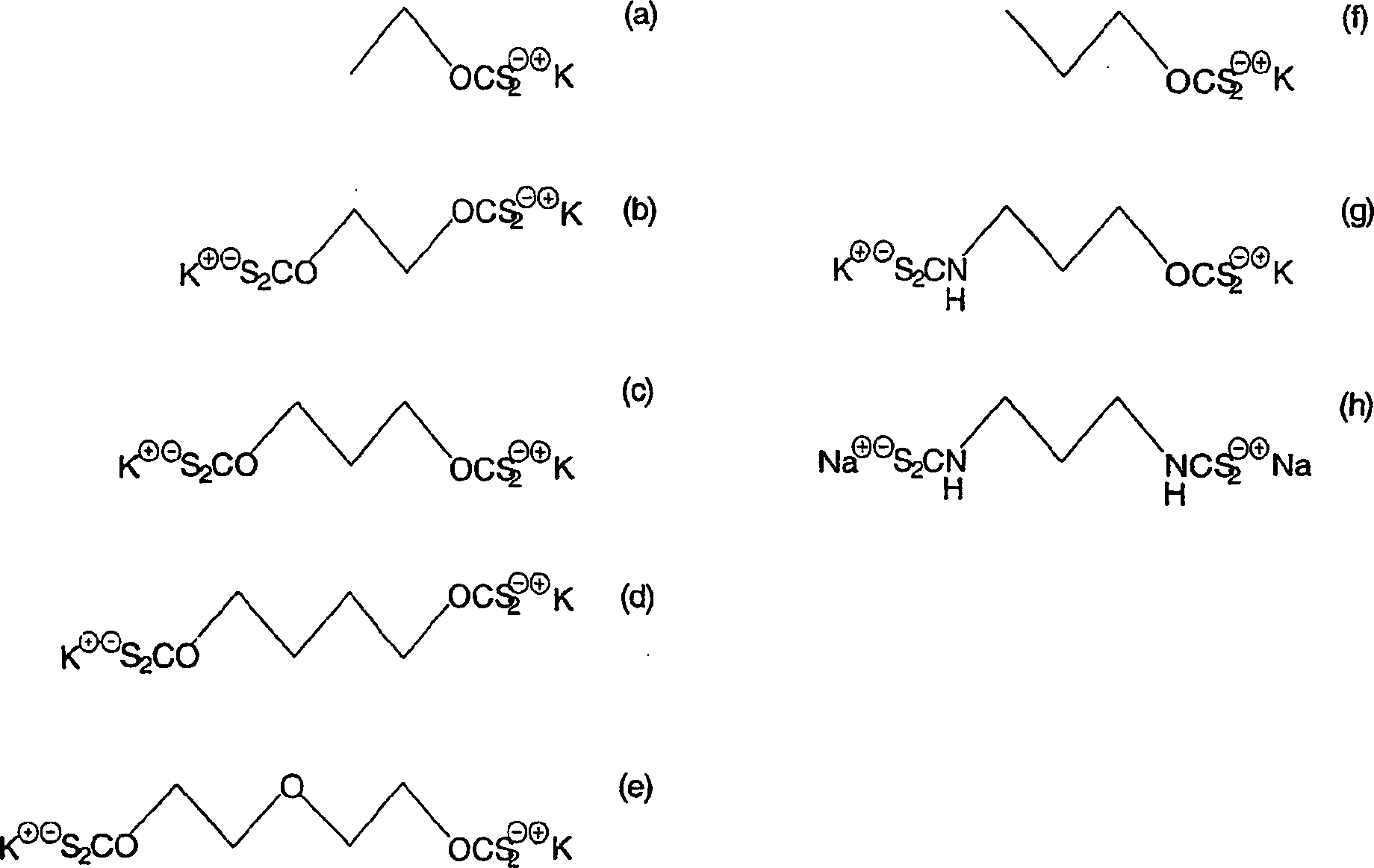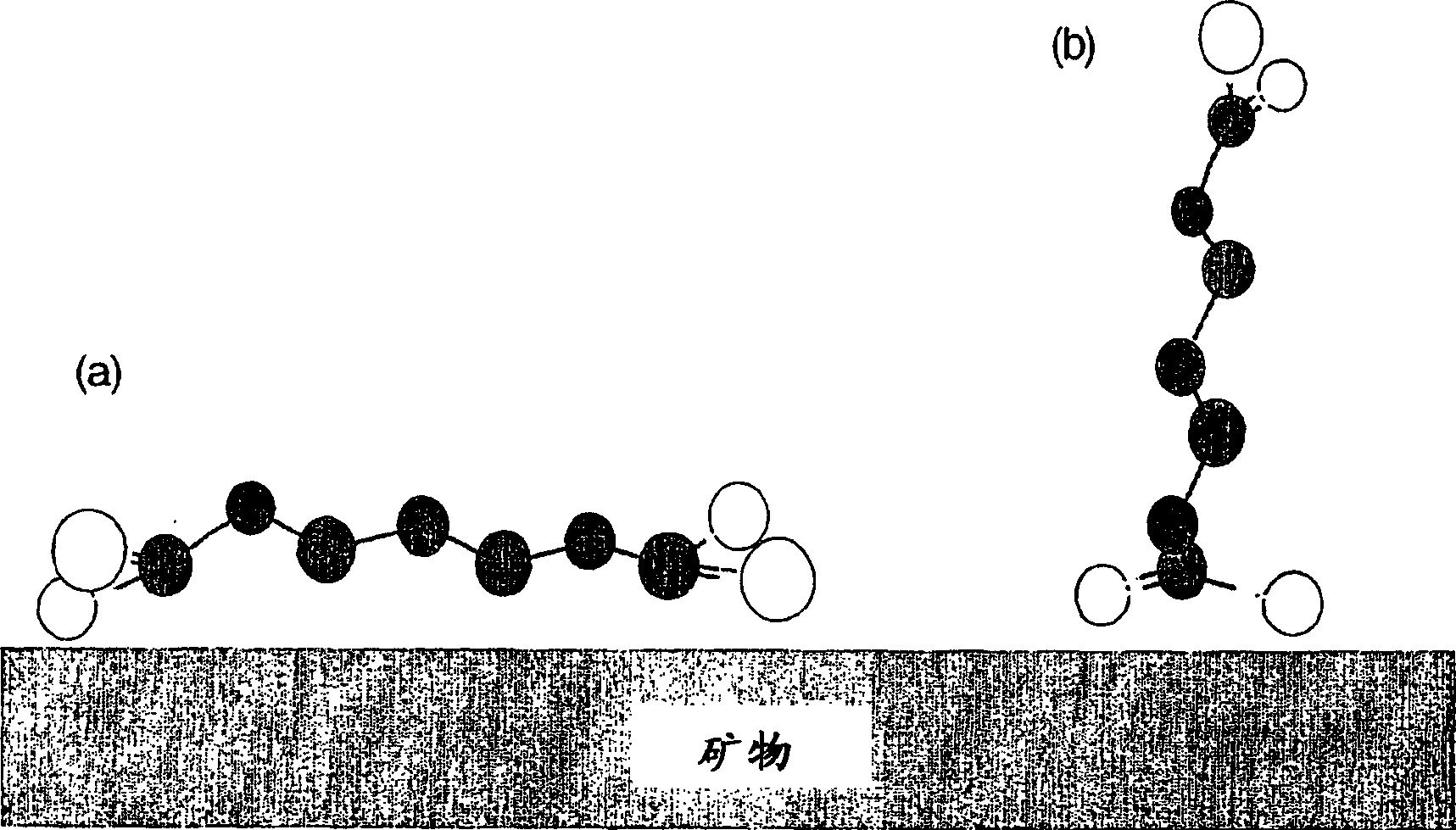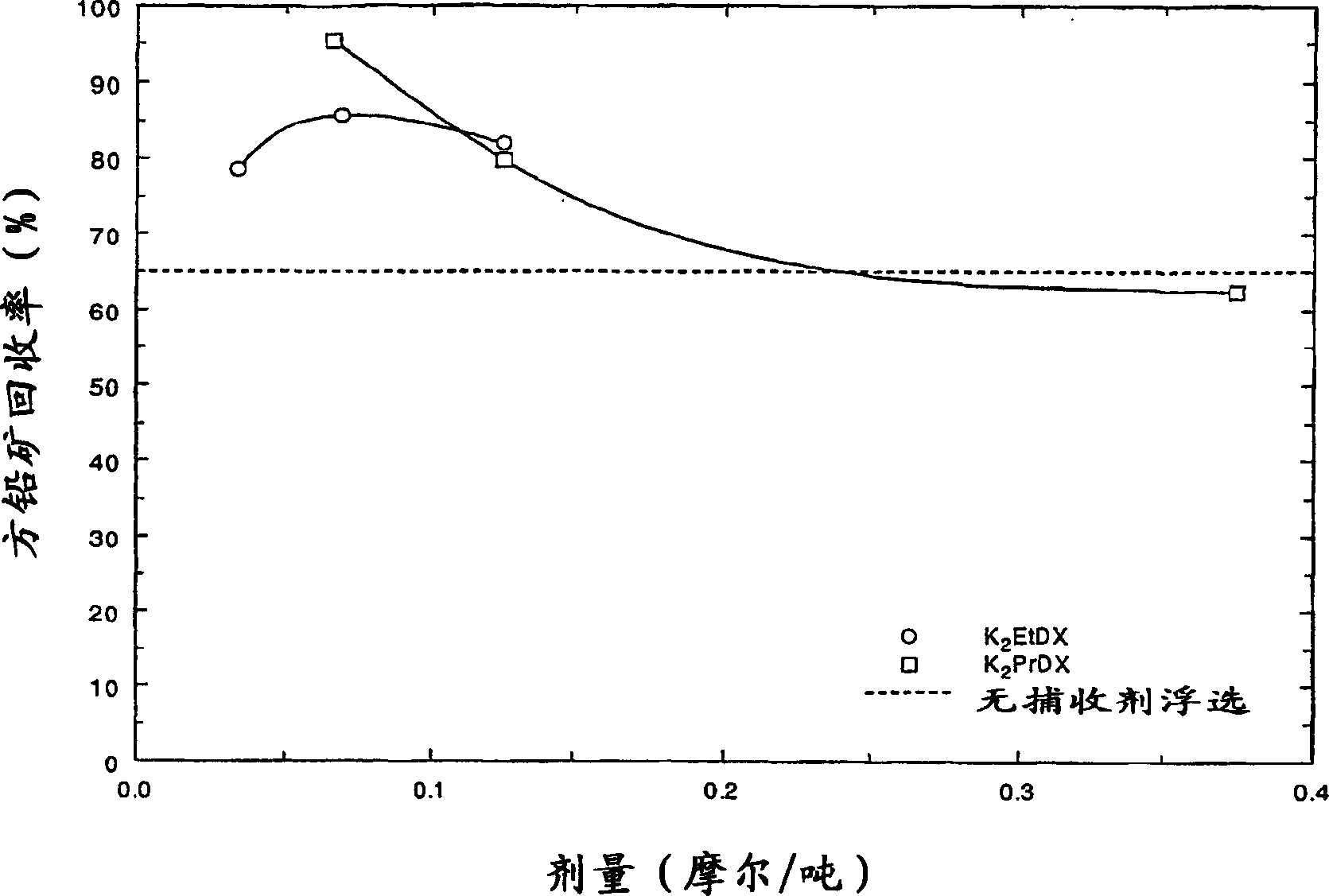Selective recovery of minerals by flotation
A technology for minerals and sulfide minerals, which is applied in the field of collector beneficiation and can solve the problem of not producing collectors for metallurgical workers and engineers
- Summary
- Abstract
- Description
- Claims
- Application Information
AI Technical Summary
Problems solved by technology
Method used
Image
Examples
Embodiment 1
[0082] Embodiment 1: Ore A
[0083] This Australian nickel sulphide ore grades 3.89% nickel, 16.85% iron, 10.42% sulphur, 0.29% copper and 8.66% magnesia. Nickel is mainly pentlandite ((Ni, Fe) 9 S 8 ) form, copper as chalcopyrite (CuFeS 2 ) exists and the main sulfide gangue contains pyrrhotite (Fe 1-x S) and pyrite (FeS 2 ), mainly pyrrhotite. Therefore, the ore contains 5.70% iron sulfide (IS).
[0084] The following usual procedure for the preparation and flotation of ore A is employed:
[0085] Ore A was crushed to pass 1.65 mm, blended and divided into 1000 gram batches using standard methods. Nickel ore charge (1000 g) was mixed with Melbourne tap water (0.5 L) and lime (0.5 g) and ground for 30 minutes at 67% solids by weight in a laboratory mild steel rod mill containing mild steel rods to obtain a weight-based P of 74 µm 80 (80% pass size). At such dimensions, nickel is expected to be well dissociated. Sufficient lime was added to the mill so that the pH o...
Embodiment 2
[0101] Embodiment 2: Ore B
[0102] This Australian copper sulphide ore grades 1.14% copper, 25.48% iron and 5.91% sulphur. Chalcopyrite is the only copper mineral present, and iron sulfide gangue exists as pyrite. Therefore, the ore contains 4.75% pyrite.
[0103] The following usual procedure for the preparation and flotation of ore B is employed:
[0104] Ore B was crushed to -2 mm, blended and divided into 1000 gram batches using standard methods. Copper ore charge (1000 g) was mixed with Melbourne tap water and ground for 30 minutes at 67% solids by weight in a laboratory mild steel ball mill containing mild steel balls to obtain a P of approximately 80 microns by weight. 80 (80% pass size). The ground pulp samples were transferred to a modified 3 liter Denver stainless steel tank and the volume of the pulp was adjusted by adding Melbourne tap water to obtain a pulp density of approximately 26% solids by weight. Stir the slurry at a speed of 1200r.p.m.
[0105] The ...
PUM
 Login to View More
Login to View More Abstract
Description
Claims
Application Information
 Login to View More
Login to View More - R&D
- Intellectual Property
- Life Sciences
- Materials
- Tech Scout
- Unparalleled Data Quality
- Higher Quality Content
- 60% Fewer Hallucinations
Browse by: Latest US Patents, China's latest patents, Technical Efficacy Thesaurus, Application Domain, Technology Topic, Popular Technical Reports.
© 2025 PatSnap. All rights reserved.Legal|Privacy policy|Modern Slavery Act Transparency Statement|Sitemap|About US| Contact US: help@patsnap.com



